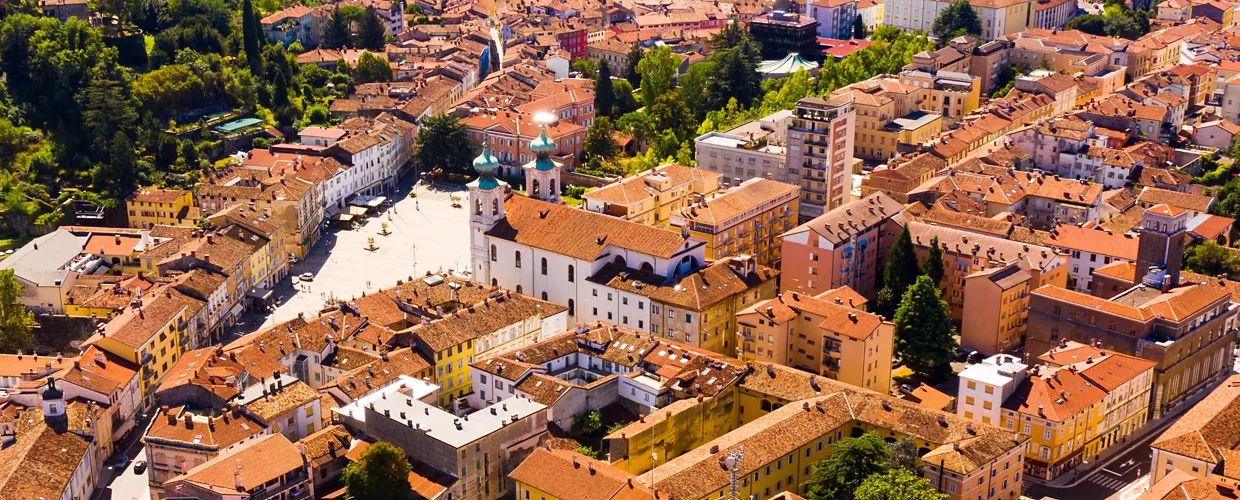This content was automatically translated. View the original text.

Overview
A border town symbolising the 20th century
A border town in the far north-east of Italy, Gorizia is a symbol of the complex history of 20th-century Europe. Once part of the Austro-Hungarian Empire, whose legacy is still clearly visible in its historic buildings and gardens, it was annexed to Italy in 1918 and then experienced the dramatic events involving Italy's eastern border during Fascism and the Second World War. At the end of the war, the city lost part of its suburbs to Yugoslavia and was divided by a wall that became one of the symbols of the Iron Curtain. With Slovenia's entry into the European Union in 2004, the barrier was removed, transforming the border into a place of encounter and sharing with Nova Gorica, the part of the city located in Slovenia. And it was precisely this friendship that led them to become, together, the European Capital of Culture 2025.
The history of Gorizia can be traced through its museums and gardens, where you can learn about specific aspects of the history of this area and its communities: the Museum of the Great War, the Topographies of Memory Museum, and the Museum of Fashion and Applied Arts. Also worth visiting are the elegant Coronini Cronberg Palace, the synagogue, Piazza Vittoria with its striking Neptune fountain and the splendid Church of St. Ignatius.
34170 Gorizia, Province of Gorizia, Italy